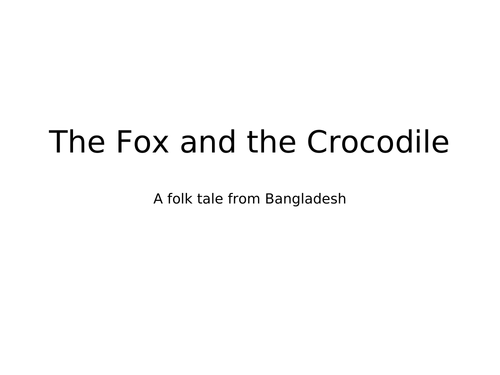







A re-telling of the folk tale of a fox who tricks a crocodile into choosing the inedible part of plants which they grew together.
The resources are:
- Powerpoints of the story in both English and Bengali,
- a story grid for pupils to use to re-tell the story
- a planning sheet for pupils to plan a story using the same theme
- a reading game for small group work
- a whole-class inferential reading/paired talk activity which makes provision for Bengali-speaking pupils to be ‘class experts’ during the session and supports understanding that folk tales are told in all languages and cultures.
The story can be used as part of topic on growing, and fruit and vegetables.
Foundation Stage Year 1 and Year 2 objectives
• Children use a range of strategies to explore their understanding of traditional stories, looking at characters, plot and events.
• Visual literacy is incorporated and children can identify different ways in which traditional tales can be told and express preferences.
Year 2 Narrative Unit 2 – Traditional stories
Children can work towards their own written version of a traditional narrative,
Read and compare alternative versions of traditional stories. Discuss opposing characters from the narrative. Discuss and compose dialogue for different characters.
Plan an alternative traditional story. Write a short alternative traditional story using connectives to indicate time and tension.
Year 2, Term 2: T3 compare story themes; T4 predict story endings/incidents; T5 discuss and compare story settings; T6 identify and describe characters; T7 prepare and retell stories; T13 use story settings from reading. (1998 Curriculum)
-
Speaking
• Tell real and imagined stories using the conventions of familiar story language -
Listening and responding
• Respond to presentations by describing characters, repeating some highlights and commenting constructively -
Understanding and interpreting texts
• Draw together ideas and information from across a whole text, using simple signposts in the text
• Give some reasons why things happen and or characters change
Something went wrong, please try again later.
This resource hasn't been reviewed yet
To ensure quality for our reviews, only customers who have downloaded this resource can review it
Report this resourceto let us know if it violates our terms and conditions.
Our customer service team will review your report and will be in touch.